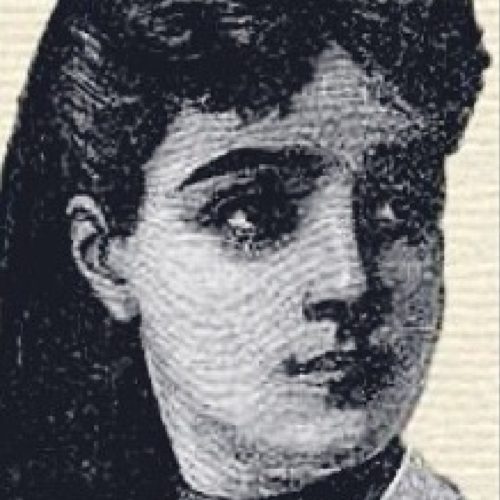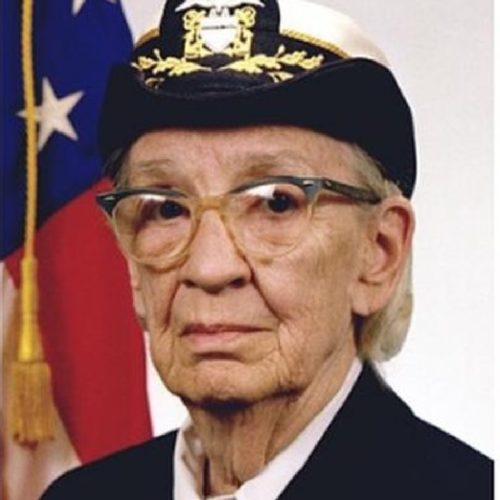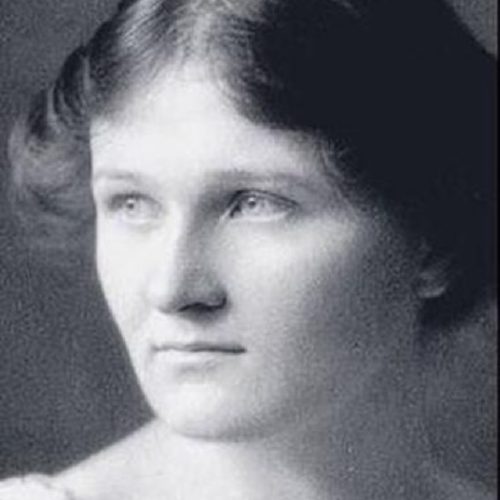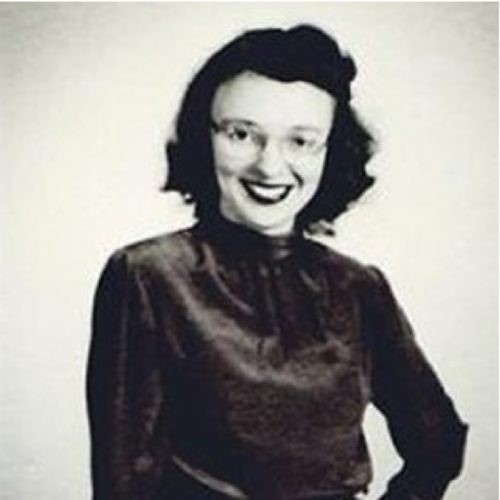
Women In STEM Spotlights
Featured here are accomplishments of some of the women who have contributed to advancing STEM fields.

Jocelyn Bell Burnell

Annie Jump Cannon

May Edward Chinn

Marie Curie

Rosalind Franklin

Sophie Germain

Caroline Herschel

Dorothy Crowfoot Hodgkin

Grace Hopper

Katherine Johnson

Rita Levi-Montalcini

Lise Meitner

Maud Menten

Maria Mitchell

Emmy Noether

Cecilia Payne

Emily Roebling

Sally Ride

Marie Tharp

Valerie Thomas

Astrophysicist
Jocelyn Bell Burnell
The only woman to study physics at her college, where there was a “tradition” amongst students that whenever a woman walked into a lecture theatre, they “stamped and whistled and called and banged the desk”. This happened in every class that she entered for two years. Discovered the first four pulsars (spinning stars made of neutrons) using a large radio telescope she had helped build and analyzed the data for. Her observations were published with her male supervisor’s name appearing before hers. He and a colleague went on to win the Nobel Prize for the discovery, while she was snubbed. It is now accepted that she was the first person to make the discovery, despite the lack of formal credit. Was created commander of the order of the British empire in 1999, and dame in 2007. She also was a member of the royal society, served as president of the royal astronomical society, and was the first female president at the institute of physics.

Astronomer
Annie Jump Cannon
Created the definitive system of classifying hundreds of thousands of stellar spectra. Went completely deaf after being stricken with scarlet fever. Classified over 225,000 stars and was able to categorize up to three stars a minute. Discovered 300 variable stars, in addition to 5 novae, a class of exploding stars. First woman to hold an officer position in the American Astronomical Society, where they still award the honor she established, the Annie J. Cannon award.

Physician
May Edward Chinn
Physician pioneering black and Native American doctor and advocate for early cancer screening in low-income communities. 1st Black woman to graduate from Bellevue Medical College. Was the 1st Black woman to hold an internship at Harlem Hospital, where she was the 1st woman to ride with the ambulance crew. Blacks were barred from formal association with hospitals, so she opened her own practice and she treated patients who didn’t have access to medical care. Was seriously considered for a research fellowship at the rockefeller institute until they discovered that she was black. Was refused research information from hospitals, so she accompanied her patient to clinic appointments to learn about biopsy techniques. Her work with the Stang Clinic helped develop the Pap smear, which tested for cervical cancer. Started a society to help black women go to med school.

Physicist / Chemist
Marie Curie
Pioneered research in the field of radioactivity. First woman to win a Nobel prize. She’s the first person and only woman to win the award in two different fields-physics and chemistry. She discovered polonium and radium, and aided in the development of x-rays.

Chemist
Rosalind Franklin
Her work with x-ray diffraction imagery led to the discovery of the structure of DNA. Published 5 papers on coal efficiency by age 26 and helped launch the field of high strength carbon fibers. Discovered that DNA has two forms, and invented a way of separating them. After DNA, she began studying viruses. Her group’s findings laid the foundation for structural virology. Without her knowledge, her data on DNA structure was shared with James Watson and Francis Crick. Franklin’s “photo 51” directly led to the pair’s discovery of the double helical structure. Four years after her death at age 37, Watson and Crick won a nobel prize for their work on DNA. Rosalind was famously left unacknowledged for her significant contribution.

Mathmetician
Sophie Germain
Was unable to get a formal education because she was a woman. Her parents opposed her learning, and denied her fire and warm clothes at night to stop her from studying, but she would smuggle in candles and wrap herself in quilts to keep reading. She taught herself Latin and Greek so she could study classical mathematics texts. Was able to obtain lecture notes from a university and corresponded her work to a professor remotely under a man’s name. Her pioneering theories on elasticity helped build the Eiffel tower. Was the 1st person to progress in providing the proof for Fermat’s last theorem, which mathematicians had been struggling with for 200 years.

Astronomer
Caroline Herschel
Known as “astronomy’s cinderella” first woman to discover a comet and the first woman to receive payment for scientific work. After a childhood case of typhus stunted her growth at four feet three inches, her family deemed her unmarriageable and raised to believe that the greatest thing she could hope to become was a scullery maid. After moving to England to live with her brother, she began assisting him in his endeavors in astronomy. Went on to discover 14 new nebulae on her own, including NGC 205, the companion to the Andromeda galaxy.

Biochemist
Dorothy Crowfoot Hodgkin
The third woman to win the nobel prize in chemistry “for her determinations by structures usues of the biochemical substances. Born to british archaeologists in egypt. When she returned to england for school, she was one of only two girls allowed allowed to study chemistry with the boys. Credited with the development of protein crystallography. Discovered three-dimensional biomolecular structures. Determined the structures of penicillin, vitamin b12 and insulin by perfecting x-ray crystallography techniques.

Computer Scientist
Grace Hopper
Pioneer in the field of computer programming joined the Navy during WWII but was turned down initially for being too old at 34 and underweight. Eventually she convinced the Naval reserve to accept her invented the 1st compiler for a computer programming language popularized the idea of machine independent programming languages, which led to the development of the 1st high level programming languages, Cobol. when she retired as a Rear Admiral at 79, she was the oldest serving officer in the service.

Mathmetician
Katherine Johnson
Was instrumental in doing the math responsible for putting men on the moon. Her family relocated 120 miles since high school wasn’t offered to blacks in her hometown. She graduated high school at 14 and graduated college at 18. Was a teacher until she applied to be a “computer,” or a woman who performed calculations for the engineers at the precursor to NASA. Calculated the trajectory for the flight of the 1st American in space, as well as the 1961 Mercury mission. Even when machine computers were 1st used in 1962 to determine John Glenn’s orbit around earth, NASA still had Johnson double check the results.

Biologist
Rita Levi-Montalcini
Convinced her father to let her study medicine, even though he believed women should only live as wives and mothers. When Mussolini banned jews from working, she set up a lab in her bedroom and used sharpened sewing needles as surgical instruments. She continued to work during the war, even when bombings forced her family to move. Isolated nerve growth factor, a protein that promotes nerve growth in nearby developing cells, which offered possible treatments for conditions such as Alzheimer’s disease, infertility and cancer. Shared the Nobel Prize for medicine for her discovery. She was also awarded the national medal of science was appointed as senator for life in Italy for her outstanding contributions to science. Continued conducting research until her death at age 103.

Nuclear Physicist
Lise Meitner
While working at the Berlin Institute as an unpaid research scientist, she was not permitted in the lab, as women were prohibited access “lest their hair catch fire”. After fleeing Nazi Germany, she was part of the team that discovered and explained nuclear fission. Her partner received a Nobel prize for the work and never acknowledged her contribution. Though often credited as the inventor of the atom bomb, Meitner adamantly refused to work on the Manhattan project, as she found it inhumane. Her other discoveries include the isotope protactinium and the cause of the auger effect. The element meitnerium is named in her honor.

Biochemist
Maud Menten
One of the 1st women in Canada to receive a medical doctorate co-developed the Michaelis-Menten equation, which changed the approach to enzyme kinetics and is still used in laboratories today. Authored and coauthored over 70 academic papers. Made co-discoveries involving hemoglobin, kidney functions, and blood sugar. Was also a painter, mountain climber, spoke 6 languages, played the clarinet, enjoyed astronomy, and went on an arctic exhibition.

Astronomer
Maria Mitchell
First professional female astronomer in America. At 12, helped calculate the exact moment of an annular eclipse. Discovered “Miss Mitchell’s comet for which she received a gold medal from the king of Denmark. Was the first member of faculty at Vassar, where she taught astronomy. A World War II ship, a lunar crater, and the Nantucket observatory are all named in her honor.

Mathemetician
Emmy Noether
Her work changed many long-held beliefs in algebra, rings, and fields, and were important to physics. Einstein called her “the most significant creative mathematical genius thus far produced since the higher education of women began”. Women couldn’t receive a formal grade and needed permission from lecturers to even audit classes, which she did. She aced her exams and was granted the equivalent of a bachelor’s degree. Since she was a women, she couldn’t obtain an academic position for years after her phd, and eventually received the unpaid position of “unofficial associate professor”. She worked for 8 years total without pay. In 1933, she was expelled from her university by the nazis because she was a Jew and she moved to America. She was only accepted to Bryn Mawr. It was her first paid position. She was 51. Einstein wanted her with him at Princeton, which banned female professors, so she was only allowed to lecture as a guest. Devised Noether’s theorem, which was important in explaining symmetry in nature and the universal laws of contributions. The theorem has been used in the search for the Higgs Boson and laid the foundations for quantum physics.

Astrophysicist
Cecilia Payne
1st person to determine that stars are primarily composed of hydrogen and helium. Attended Cambridge University on scholarship, even though they didn’t grant degrees to women at the time. She still finished her studies and was elected a member of the Royal Astronomical Society. Was the 1st person to receive an astronomy phd from Harvard. Her thesis was called “undoubtedly the most brilliant phd thesis ever written in astronomy” by Otto Struve. Calculated a temperature scale of stars and correctly theorized their composition, though her colleague pressured her into making her conclusion less definitive, as he said it was improbable. A few years later, he arrived at the same conclusion. At Harvard, she was their 1st female professor and, later, the 1st woman to head a department.

Engineer
Emily Roebling
First woman field engineer oversaw the design and construction of the Brooklyn bridge after her husband, the chief engineer of the bridge was bedridden from Cassion disease. Emily became a messenger for him and reported on the bridge’s progress. She soon developed an extensive knowledge of strength of materials, stress analysis, cable construction, and calculating catenary curves through both his teachings and a prior interest in the subject. For the next fourteen years, she jointly planned the construction with her husband and took over most of his duties, including day to day supervision and project management. As a reward for her dedication, she was the the first to cross the Brooklyn bridge by carriage. After the completion of the bridge, she became one of the first female lawyers in New York.

Physicist/Astronaut
Sally Ride
At 32, she became the first American woman and youngest American to go into space. Beat out 1,000 applicants and completed NASA’s rigorous training program for the opportunity. Made numerous contributions to the fields of science and space exploration, including helping to develop the space shuttle’s robot arm. Had to deal with sexist reporters asking how the flight would affect her “reproductive organs and if she “weeped” when things went wrong. Stressed the importance of role models in the sciences for girls to attain gender equality in those fields. She developed programs and wrote children’s books to get younger girls to learn about science and space. Though her 27 year relationship with tam O’Shaughnessy wasn’t made public until her obituary the revelation made her the first known LGBT astronaut.

Geologist
Marie Tharp
Produced the first ever map of the ocean floor. During WWII, Marie enrolled the Petroleum Geology Program but was banned from field work. Unsatisfied, she left and began working with Bruce Hezeen on mapping the ocean floor. Wasn’t allowed to enter research vessels and ships, and would have to process raw sonar data. She combined the data with other seismological data, performed complex calculations, and drew the map based on her findings. Her map proved that the ocean floor was not flat, as previously believed, but was filled with mountains, canyons, and volcanos. At the time, those who believed in plate tectonics were shunned by the science community. This made her discovery of the mid-ocean ridges (chains of moving mountains especially controversial. The reluctance to believe her findings led to Tharp’s being fired. She turned her home into a geological office with assistants to complete the map, which wasn’t finished until 1977. The map is still in use today, and satellite photography has proved its accuracy.

Inventor
Valerie Thomas
Pursued a career in science, despite being discouraged from a young age. Learned about technology at the age of 8 from a book called “the boy’s first book on electronics. Her father would not assist her with any of the projects, despite his interest in the subject. Attended an all girls school that downplayed math and science. After graduating, she attended Morgan State University, where she was one of the two women there who majored in physics. Worked as a data analyst at NASA. Managed the development of the first satellite to send images to earth from space. Invented the illusion transmitter, which is still used today by NASA, and is being explored for use in surgeries and even television screens. Helped develop computer research on halley’s comet, the program designs that supported ozone layer, and satellite technology.
